Tips for Catching Early Spring Bass
Tips for Catching Early Spring Bass

Muddy water by itself can make catching bass a challenge. Bass in muddy water tend to hold very tight to cover. The lack of visibility makes locating and catching prey more difficult for them. They have their own ways of dealing with it that work for them.
But how do we remedy that? How do we turn what seems like a negative situation into one that’s productive? We make it as easy as possible for them to find our baits!
Slow Down
One of the first tips for catching early Spring bass is to slow down our presentations. Yes, we can catch some fish chunking and winding spinnerbaits, covering lots of water at high speeds. But the bass we catch will usually be few and far between compared to slowing down and making it easier for them to find our baits.
There will occasionally be exceptions to this rule of thumb, but we will need to let the bass tell us when.
The best thing we can do is to consciously slow our presentations down, regardless of what bait we are throwing. Even baits like spinnerbaits and lipless cranks should be worked slower than we would normally work them.
Make Some Noise

When we say noise, we automatically think of things that we can hear with our ears. And while that’s part of the equation, we also need to look at another part. But we’ll do that in a few minutes. For now, let’s talk about audible noise.
The most obvious way to add audible noise to our baits is with rattles. Most modern plastic crankbaits come with some kind of rattles built into them. This goes from baits that dive just under the surface, to those that dive down into the 15-25 foot range.
Pick up just about any crankbait and give it a shake. In addition to hearing the hooks shake and rattle, you will almost always hear some kind of metal or plastic rattles moving around inside the plastic body.
All Rattles Were Not Created Equal
It’s important to know that not all rattles were created equal. What do I mean by that?
Every rattle creates its own unique sound. Let’s explore the different kinds of rattles and get a better understanding of which one does what.
One of the first kinds of rattles used in plastic baits was the good old copper BB. A few BBs were placed inside of the body of a bait and, BINGO, it made noise and caught bass! This new idea was groundbreaking, and it helped tens of thousands of bass anglers catch bass in a new way, as Bill Lewis Lures launched their Rat-L-Trap.
But that wasn’t the end of the rattle adventure, by any means. Before too long, steel BBs were used, creating yet another type of rattling sound with a whole different pitch and more noise that copper BBs could generate.
Clunk, Clunk, Clunk

This led to rattles being created that were a single slab of steel, or a single larger ball-bearing. These designs didn’t generate the shrill rattling sound that anglers had become accustomed to.
Instead, they made a clunking noise. This clunking noise was less “noisy” when compared to the BBs. It also created a much deeper noise that was in a lower frequency range of noises than the BBs did.
While the shrill sound made by the BBs was literally audible underwater, both by bass and by humans, the large single rattle made more than just noise. It also vibrated. This vibration wasn’t audible to the human ear, but the bass could easily detect it with their lateral line nerves.
This vibration was more indicative of the vibration a baitfish might make as it moved its tail fin, although obviously much more pronounced.
But now that we’re talking about vibration, let’s dig into that a little deeper.
The “Silent” Noise

Bass have a set of nerves called the lateral line. Despite what many anglers think, the lateral line is not the dark line that runs down the side of a largemouth bass. That dark line is simply part of the coloration of a bass. Smallmouth bass also have a lateral line, but they are minus the dark, visible line running horizontally down the length of their body.
Knowing that bass can hunt using vibrations, not simply based on sight or audible noises, it’s important that we use that to our advantage.
In muddy water, it benefits us to take full advantage of this by offering the bass different baits that make various types of vibrations, but not necessarily audible noise.
The absolute best lure of this type would be the spinnerbait. No, it’s not the only bait that does this. But it is the best of its type.
More specifically, spinnerbaits with large blades, or a spinnerbait with a single large Colorado blade, are the absolute best for this.
The single Colorado blade will thump out a rhythm below the surface of the water that will be super easy for the bass to detect and home in on, even in muddy water. This also works well when fishing after dark, but that’s a topic for another post 🙂
Bulk It Up
Another one of my best Tips for Catching Early Spring Bass is to bulk up your baits, especially in cold, muddy water.
Because muddy water bass almost always hold very tight to cover, and lures like jigs don’t make much noise, and don’t give off much vibration, it’s important to make them appear bigger.
Making your jigs appear bigger gives them a bigger silhouette, making them a bit more visible to the bass in the muddy water. That added bulk also moves more water, creating vibrations underwater, albeit fairly subtle vibrations when compared to a spinnerbait.
Those extra vibrations help the bass to detect the movement of your bait and find it more easily. Again, the vibrations might be subtle, but every little bit helps when it comes to making it easier for the bass to find your bait.
You can do this by using bulkier skirts on your jigs. Many bass jigs come with skimpy, sparse skirts. That’s fine for normal conditions, but not for cold, muddy water.
You will also need to use a bulky trailer on your bass jigs. I used to love the Uncle Josh Jumbo Pork Frogs. The pork rind body was super bulky and moved a lot of water! Unfortunately, Uncle Josh exited the pork rind business back in 2015, and I haven’t found any other suitable or comparable pork rind products.
There are, however, dozens of good soft plastic trailers available. The Z-Man Batwingz Jig Trailer is one of the better plastic trailers when it comes to bulk. It’s also super durable.
But there are literally dozens of very good options available for soft plastic jig trailers. Just make sure whichever trailer you choose is bulky enough to displace a fair amount of water. Check out a bunch of them right here at this link.
As mentioned above, rattles are a great way to add noise to your bait. Jigs are no exception. Many companies offer rattles made especially for jigs, so be sure to keep some on hand for the times when you need them. They can make the difference between getting bites or not under some conditions.
Let The Color Do The Talking

Color choice can make a huge difference, especially when the water is dirty and you’re throwing a moving bait.
For lipless cranks, think red, chartreuse, orange or a combination of those colors.
Firetiger or Red Craw patterns work really well on most lakes with stained water. But don’t be afraid to experiment. Let the bass do the talking.
And instead of throwing the standard 3/8 oz. lipless crankbaits, bump them up to 1/2 oz. If a 3/4 oz. size is available, use it! Remember, big and bulky is better in dirty water.
Also, don’t be afraid to try other types of crankbaits. Baits with a fat body and a wide wiggle displace more water, making it easier for the bass to find them.
And bump that cover that you’re fishing around. Crash into dock pilings. Careen your bait off submerged boulders during the retrieve. I’ve caught bass up to 5 lbs. doing this in dirty, cold early spring waters.
Customize For The Conditions
As I wrap this up, I would be terribly amiss if I didn’t mention this.
Many times, the best way to catch bass under these conditions is to make your own baits. This is especially true for jigs and spinnerbaits.
The vast majority of my biggest early spring bass in cold, muddy and windy conditions have been caught on baits I have made myself.
Doing this can give you some advantages that you wouldn’t have if you relied solely on retail package baits.
You can make color combinations that you can’t find on store shelves. And you can mix and match blades on your spinnerbaits that work for your conditions.
I buy all of my lure components from www.LurePartsOnline.com. I’ve been doing business with them since the 1990s. I can get the absolute highest quality parts from them for anything that I want to make myself.
Not only does it cost me less to make my own baits, but I get the satisfaction of catching big bass on my own baits.
Even better is the fact that having lure parts and components on hand allows me to tinker and experiment endlessly. Some of the weirdest ideas can sometimes turn out to be the best lure for an entire season of fishing.
It’s a Wrap
Well, let’s wrap this up. Remember that there are no hard and fast rules when it comes to catching bass. Conditions can change from hour to hour, so it’s important that we change with them, when necessary.
Experiment. Try new stuff. But most importantly, let the bass tell you what they want, instead of you trying to tell the bass what they want!
I hope you’ve enjoyed this article and found it informative.
If you like this article, or if you found it helpful, please be sure to share it with others!
And feel free to leave comments below.
Good fishing <><
flexoffers

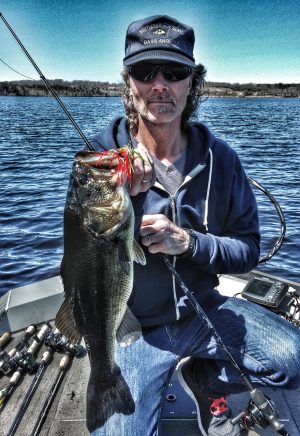



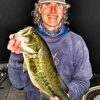
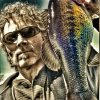
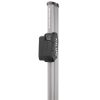

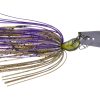

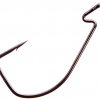
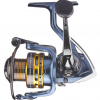
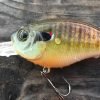
There are no comments yet, add one below.